-
 bitcoin
bitcoin $114779.865156 USD
2.30% -
 ethereum
ethereum $4226.519789 USD
2.39% -
 tether
tether $1.000545 USD
0.04% -
 xrp
xrp $2.890223 USD
0.92% -
 bnb
bnb $1030.029301 USD
2.95% -
 solana
solana $212.824944 USD
1.69% -
 usd-coin
usd-coin $0.999757 USD
0.01% -
 dogecoin
dogecoin $0.234961 USD
-0.27% -
 tron
tron $0.337174 USD
0.42% -
 cardano
cardano $0.804783 USD
0.09% -
 hyperliquid
hyperliquid $45.748770 USD
-2.85% -
 chainlink
chainlink $21.699170 USD
0.82% -
 ethena-usde
ethena-usde $1.001452 USD
0.08% -
 avalanche
avalanche $30.237800 USD
1.14% -
 stellar
stellar $0.372604 USD
1.52%
How does the cloud backup work for Coinbase Wallet?
Coinbase Wallet uses no cloud backup for private keys—users must securely store their 12-word recovery phrase, as it's the only way to restore access.
Sep 30, 2025 at 02:54 pm
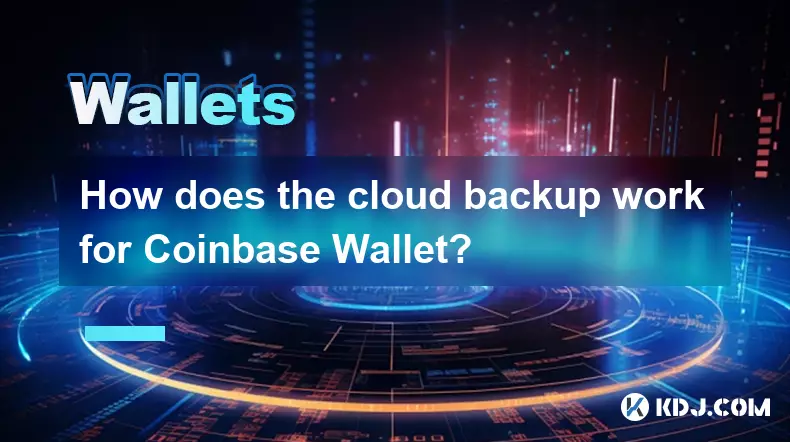
Understanding Cloud Backup in Coinbase Wallet
1. Coinbase Wallet does not use traditional cloud backup methods to store users’ private keys or seed phrases. Instead, it operates as a non-custodial wallet, meaning only the user holds control over their funds and recovery information. The wallet stores cryptographic keys locally on the user’s personal device. This design ensures that no third party, including Coinbase itself, can access or restore a user’s wallet without the original 12-word recovery phrase.
2. When setting up the Coinbase Wallet app, users are prompted to securely write down and store their recovery phrase. This phrase acts as the sole method for restoring wallet access across devices. There is no option to upload this phrase to any cloud service managed by Coinbase. If the recovery phrase is lost and the device becomes inaccessible, there is no way to retrieve the assets held in the wallet.
3. While some may confuse the term “cloud backup” with automatic syncing features, Coinbase Wallet does not sync data through iCloud, Google Drive, or similar platforms. Any attempt to manually back up the device using system-level cloud services will not include sensitive cryptographic material due to built-in security restrictions enforced by iOS and Android operating systems.
4. The application may store certain non-sensitive data—such as interface preferences or recently interacted dApps—in encrypted form on cloud infrastructure, but these elements do not grant access to funds. These auxiliary functions improve user experience without compromising security principles inherent to decentralized wallets.
5. Users who wish to maintain continuity across multiple devices must manually input the recovery phrase during setup on each new device. This process reinforces personal responsibility and aligns with blockchain best practices where ownership equals control through possession of private credentials.
Security Implications of No Cloud Storage
1. By avoiding cloud-based storage for critical recovery data, Coinbase Wallet eliminates a major attack vector exploited in centralized systems. Hackers cannot breach servers to obtain mass sets of private keys because such repositories do not exist within Coinbase’s architecture.
2. The absence of remote backups means phishing attacks and social engineering attempts become more difficult to execute successfully. Without a password reset function or email-linked recovery mechanism, attackers cannot impersonate users to regain access.
3. However, this heightened security places significant responsibility on individuals. Forgetting or misplacing the recovery phrase results in permanent loss of funds. No customer support team can intervene to reverse such outcomes, emphasizing the importance of physical safekeeping—such as writing the phrase on paper and storing it in a secure location.
4. Some users opt to use hardware solutions like metal seed phrase plates to protect against fire, water, or degradation over time. Digital photos or unencrypted notes are strongly discouraged due to risks of unauthorized access via compromised devices or accounts.
5. The trade-off between convenience and security is intentional. Decentralized finance (DeFi) relies on self-sovereignty, and Coinbase Wallet reflects this philosophy by ensuring users are the sole custodians of their digital assets.
Alternatives to Traditional Cloud Backup
1. One alternative approach adopted by advanced users involves splitting the recovery phrase using Shamir’s Secret Sharing (SSS) schemes. This technique divides the phrase into multiple parts, requiring a threshold number to reconstruct the full seed. It allows distribution of fragments across trusted parties or locations without exposing the complete key.
2. Third-party vault services integrated with multi-signature protocols offer another layer of protection. These setups require multiple approvals before transactions are executed, reducing risk even if one component is compromised. Though not natively part of Coinbase Wallet, they can be used alongside when interacting with compatible DeFi platforms.
3. Time-locked recovery mechanisms and geofenced authentication tools are emerging options that add contextual barriers to unauthorized access. While not directly tied to Coinbase Wallet, awareness of these innovations helps users build comprehensive asset protection strategies beyond simple backups.
4. Encrypted external drives represent a middle ground for tech-savvy individuals seeking redundancy. Storing an encrypted file containing the recovery phrase on a USB drive kept in a safety deposit box combines digital durability with physical isolation from network threats.
Frequently Asked Questions
Q: Can I recover my Coinbase Wallet if I lose my phone and didn’t write down the recovery phrase?A: No. Without the 12-word recovery phrase, there is no way to regain access to your wallet or its contents. Coinbase cannot assist in recovering funds due to the non-custodial nature of the wallet.
Q: Does enabling biometric login create a cloud backup of my wallet?A: No. Biometric authentication only unlocks the locally stored wallet data on your current device. It does not generate or transmit backups to any server or cloud environment.
Q: Is it safe to store my recovery phrase in a note-taking app synced to the cloud?A: No. Storing the recovery phrase digitally—especially in apps linked to cloud services—exposes it to potential breaches, malware, or unauthorized access. Physical storage in a secure location is strongly recommended.
Q: What happens if I reinstall the Coinbase Wallet app on the same device?A: Reinstalling the app removes all local data. You must restore the wallet using your 12-word recovery phrase during setup. Failure to provide the correct phrase will result in a new wallet being created with no access to previous balances.
Disclaimer:info@kdj.com
The information provided is not trading advice. kdj.com does not assume any responsibility for any investments made based on the information provided in this article. Cryptocurrencies are highly volatile and it is highly recommended that you invest with caution after thorough research!
If you believe that the content used on this website infringes your copyright, please contact us immediately (info@kdj.com) and we will delete it promptly.
- ChatGPT, Bitcoin, and $HYPER: Riding the Crypto Wave
- 2025-09-30 16:25:14
- Mutuum Finance (MUTM): Riding the DeFi Wave with Crypto Price Prediction
- 2025-09-30 16:25:14
- XRP ETF Approval Odds Soar: Analyst Predicts $33 Price Surge!
- 2025-09-30 16:30:01
- Keel, Solana, and Sky Stablecoin: Fueling the Future of DeFi
- 2025-09-30 16:45:13
- EcoChain, DePIN Infrastructure, and X1Nodes: Powering the Web4 Revolution
- 2025-09-30 16:30:01
- Pi Network's Institutional Momentum: Leading the Web3 Revolution
- 2025-09-30 16:45:13
Related knowledge
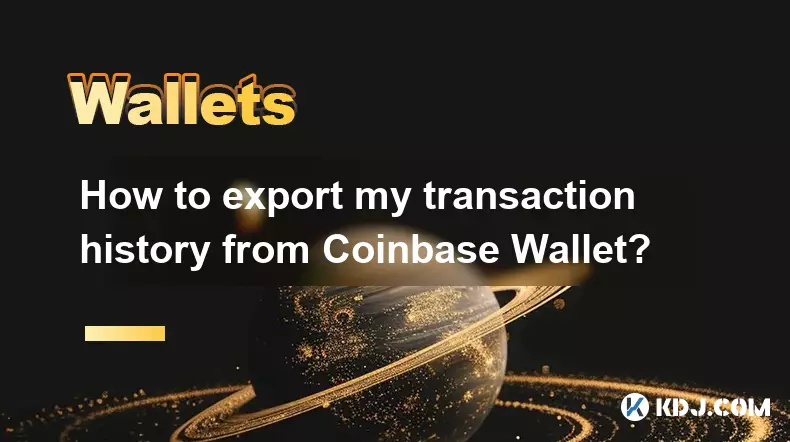
How to export my transaction history from Coinbase Wallet?
Sep 30,2025 at 03:54pm
Understanding Coinbase Wallet Transaction Data1. Coinbase Wallet operates as a self-custodial cryptocurrency wallet, meaning users hold their private ...

How to stake Ethereum (ETH) in Coinbase Wallet?
Sep 30,2025 at 03:18pm
Understanding Ethereum Staking on Coinbase Wallet1. Ethereum staking allows users to earn rewards by participating in the network’s proof-of-stake con...

How does the cloud backup work for Coinbase Wallet?
Sep 30,2025 at 02:54pm
Understanding Cloud Backup in Coinbase Wallet1. Coinbase Wallet does not use traditional cloud backup methods to store users’ private keys or seed phr...
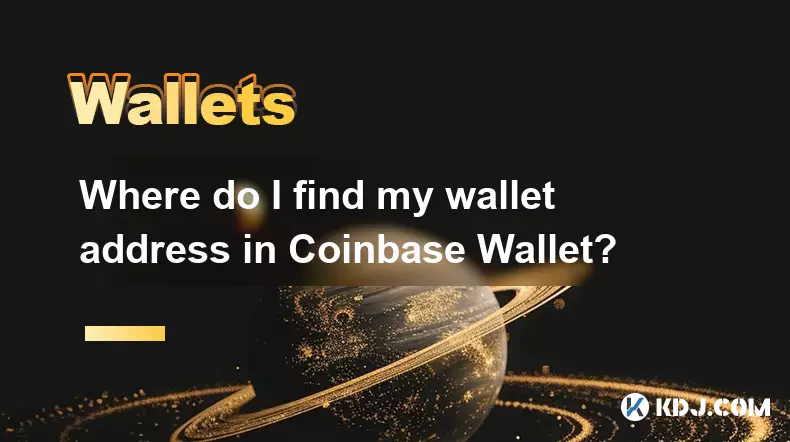
Where do I find my wallet address in Coinbase Wallet?
Sep 30,2025 at 03:01pm
Understanding Your Coinbase Wallet Interface1. Upon launching the Coinbase Wallet app, users are presented with a clean dashboard that displays their ...
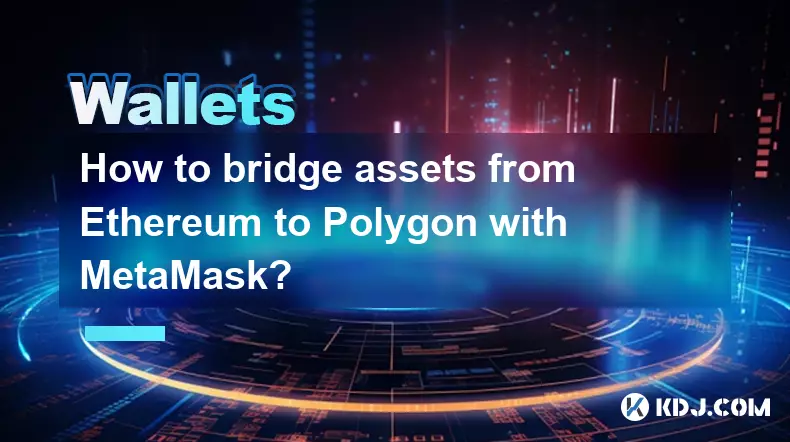
How to bridge assets from Ethereum to Polygon with MetaMask?
Sep 30,2025 at 03:36pm
Connecting Your MetaMask Wallet to Polygon Network1. Open your MetaMask wallet and ensure you are on the Ethereum Mainnet. Confirm that your wallet ho...
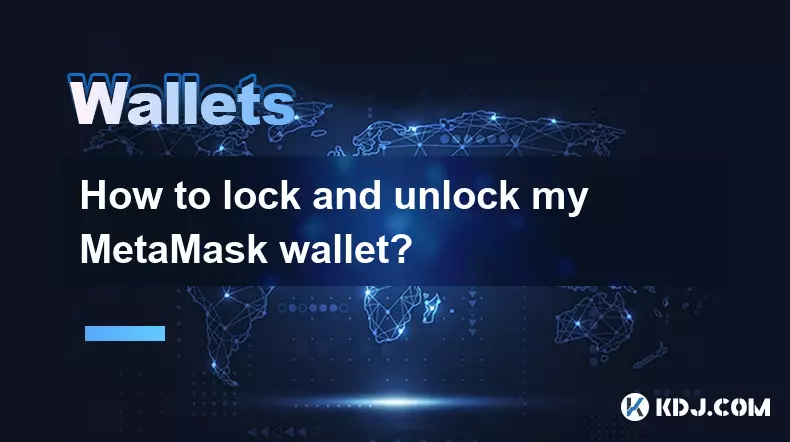
How to lock and unlock my MetaMask wallet?
Sep 30,2025 at 04:01pm
Understanding MetaMask Wallet Security1. MetaMask is a widely used cryptocurrency wallet that allows users to interact with the Ethereum blockchain an...

How to export my transaction history from Coinbase Wallet?
Sep 30,2025 at 03:54pm
Understanding Coinbase Wallet Transaction Data1. Coinbase Wallet operates as a self-custodial cryptocurrency wallet, meaning users hold their private ...

How to stake Ethereum (ETH) in Coinbase Wallet?
Sep 30,2025 at 03:18pm
Understanding Ethereum Staking on Coinbase Wallet1. Ethereum staking allows users to earn rewards by participating in the network’s proof-of-stake con...

How does the cloud backup work for Coinbase Wallet?
Sep 30,2025 at 02:54pm
Understanding Cloud Backup in Coinbase Wallet1. Coinbase Wallet does not use traditional cloud backup methods to store users’ private keys or seed phr...

Where do I find my wallet address in Coinbase Wallet?
Sep 30,2025 at 03:01pm
Understanding Your Coinbase Wallet Interface1. Upon launching the Coinbase Wallet app, users are presented with a clean dashboard that displays their ...

How to bridge assets from Ethereum to Polygon with MetaMask?
Sep 30,2025 at 03:36pm
Connecting Your MetaMask Wallet to Polygon Network1. Open your MetaMask wallet and ensure you are on the Ethereum Mainnet. Confirm that your wallet ho...

How to lock and unlock my MetaMask wallet?
Sep 30,2025 at 04:01pm
Understanding MetaMask Wallet Security1. MetaMask is a widely used cryptocurrency wallet that allows users to interact with the Ethereum blockchain an...
See all articles










































































